The University of Chicago Press, Chicago 60637
The University of Chicago Press, Ltd., London
1978, 1980, 2012 by The University of Chicago Press
All rights reserved. Published 1978.
Third edition 2012
Printed in the United States of America
21 20 19 18 17 16 15 14 13 12 1 2 3 4 5
ISBN-13: 978-0-226-90141-1 (paper)
ISBN-10: 0-226-90141-6 (paper)
ISBN 978-0-226-03299-3 (e-book)
Library of Congress Cataloging-in-Publication Data
Wilson, William J., 1935
The declining significance of race : Blacks and changing American institutions/William Julius Wilson. Third edition,
p. cm.
Includes bibliographical references and index.
ISBN-13: 978-0-226-90141-1 (paperback : alkaline paper)
ISBN-10: 0-226-90141-6 (paperback : alkaline paper) 1. United
StatesRace relations. 2. African AmericansEconomic conditions. 3. African AmericansSocial conditions. I. Title.
E185.W73 2012
305.800973dc23
2011043371

This paper meets the requirements of ANSI/NISO Z39.48-1992 (Permanence of Paper).
PREFACE
This book is a study of race and class in the American experience. Its focus is a rather significant departure from that of my previous book, Power, Racism, and Privilege, in which I paid little attention to the role of class in understanding issues of race. I now feel that many important features of black and white relations in America are not captured when the issue is defined as majority versus minority and that a preoccupation with race and racial conflict obscures fundamental problems that derive from the intersection of class with race. I should hasten to point out, however, that I do not subscribe to the view that racial problems are necessarily derived from the more fundamental economic class problems. The issues are far more complex than such an analysis would suggest. When black and white relations are viewed from a broad historical perspective, a uniform reliance on class to explain all forms and degrees of racial conflict can be as misleading as a uniform reliance on race.
Since class is a slippery concept that has been defined in a variety of ways in the social science literature, I should like to indicate that in this study the concept means any group of people who have more or less similar goods, services, or skills to offer for income in a given economic order and who therefore receive similar financial remuneration in the marketplace. Ones economic class position determines in major measure ones life chances, including the chances for external living conditions and personal life experiences.
It is appropriate to point out in this connection that in a racist societythat is, a society in which the major institutions are regulated by racist ideologythe economic class position of individual minorities is heavily determined by race. In such a society the life chances of the members of individual minorities are essentially more a function of race than of class. However, as the influence of race on minority class-stratification decreases, then, of course, class takes on greater importance in determining the life chances of minority individuals. The clear and growing class divisions among blacks today constitute a case in point. It is difficult to speak of a uniform black experience when the black population can be meaningfully stratified into groups whose members range from those who are affluent to those who are impoverished. This of course has not always been the case, because the crystallization of a black class structure is fairly recent.
In this study I have traced the development of a black class structure and have related it to what I perceive to be the declining influence of race in the economic sector. In , following E. Franklin Fraziers lead, I have associated the black middle class with those who are employed in white-collar jobs and in craftsmen and foremen positions. The problem with this broad classification, insofar as it relates to my definition of economic class, is that although the positions of professional and technical workers, proprietors, managers and officials, and clerical workers all show yearly median incomes that exceed those of semiskilled operatives, service workers, unskilled laborers, and farm workers, this is not true of the white-collar position of sales workers. The median income of black sales workers in 1973 was below that of semiskilled operatives and roughly equivalent to that of unskilled laborers and service workers. However, even as late as 1973, only 2 percent of all black workers were classified as sales workers and therefore their inclusion in the broad white-collar category does not seriously distort either my definition of the black middle class or my description and analysis of the changing black class structure.
It could be suggested that the black class structure is only a truncated version of the white class structure because the average income of black middle-class workers is uniformly lower than the average income of the white middle classes. However, this is a consequence of the historic effects of racial discrimination by which older black workers were denied entry into higher-paying white- and blue-collar positions. Since the progressive movement of the more educated blacks into the higher-paying middle-class jobs is being experienced primarily by the younger segments of the population, the income discrepancies between black and white workers is basically a reflection of differences in seniority. Despite the average income differences between black and white workers, it is clear that economic divisions now exist among blacks, divisions which show every sign of deepening and which have profound implications for the significance of race in the American experience.
The elaboration of a black class structure and a consideration of its social and racial implications are related to more general issues involving the relationships between race and class on the one hand, and basic institutions of American society on the other. The first chapter of this book outlines this relationship in terms of a broad theoretical framework that examines racial change from a macrosociological perspective. discusses the declining significance of race vis--vis basic theoretical and substantive arguments advanced in the previous chapters and attempts to redefine some of the problems that are generally perceived as racial in nature.
In the preparation of this book, I am deeply indebted to the University of Chicago for granting me a leave of absence during the 1975 academic year. A good portion of the manuscript was written during that period. I would like to give my special thanks to my former research assistant, Katherine Osullivan See, now an assistant professor of sociology at James Madison College of Michigan State University. She not only labored long hours in the University of Chicago library searching out obscure documents, but she was also a useful critic of and sounding board for my ideas. I would also like to thank Earline Franklin for her masterful job of typing the manuscript and suggesting appropriate editorial corrections.
I owe a very special debt to a number of people who read various versions of the manuscript. I am particularly grateful to Peter I. Rose, whose comments in 1975 on an early draft of the manuscript convinced me that my thinking on the subject had not sufficiently crystallized. I returned to the drawing board and produced the present version, which he read in its entirety and for which he provided useful comments and criticisms. Margaret Andersen, Edna Bonacich, Michael Burawoy, Jan Dizard, Nathan Glazer, Morris Janowitz, Ira Katznelson, Lewis Killian, Pierre van den Berghe, and Doris Wilkinson also read the entire manuscript and presented detailed written suggestions and criticisms that were extremely helpful in my final revisions. Parts of individual chapters were read by Richard Ogles and Loretta Williams, and they too provided helpful comments.

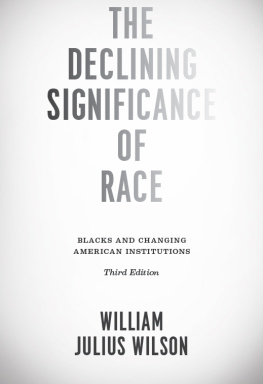
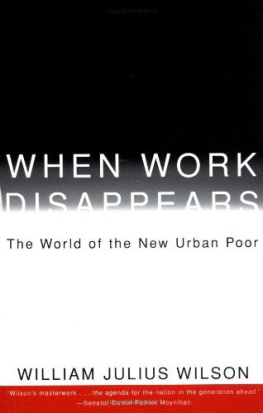
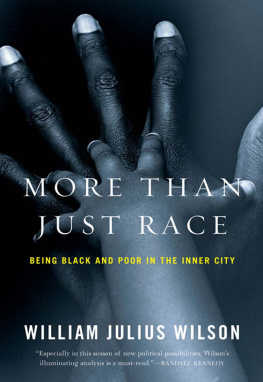

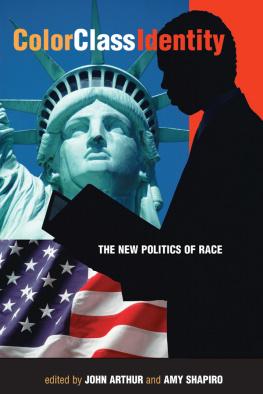
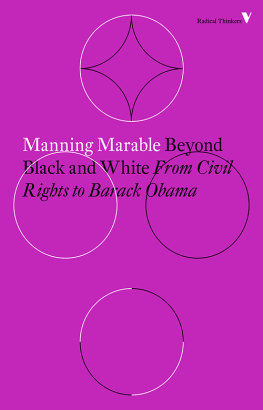
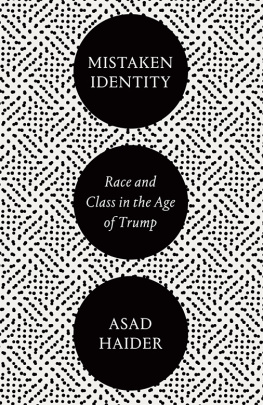

 This paper meets the requirements of ANSI/NISO Z39.48-1992 (Permanence of Paper).
This paper meets the requirements of ANSI/NISO Z39.48-1992 (Permanence of Paper).